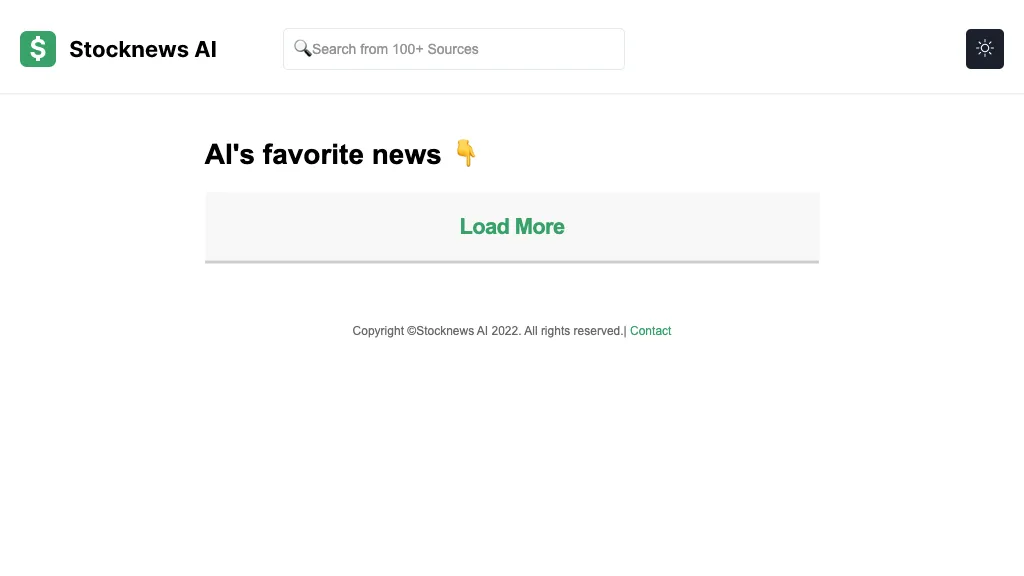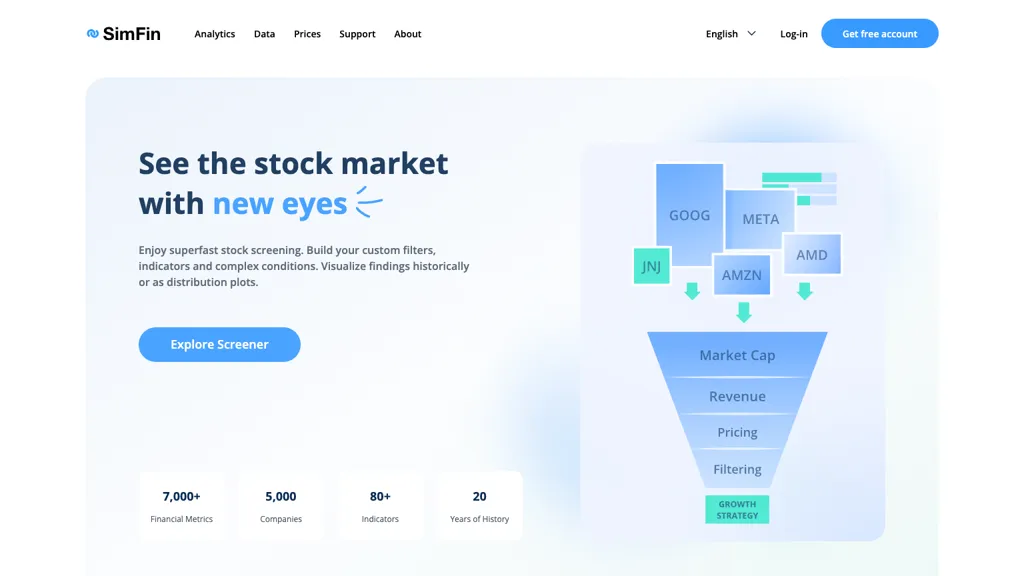Market coverage plays an important part in evaluating AI platforms for analyzing and predicting stocks because it affects your ability to access a vast variety of financial and asset markets. A platform that offers comprehensive market coverage can allow you to diversify your portfolios and discover global trading opportunities, and adjust to different strategies. Here are 10 tips on how you can evaluate the market coverage of platforms.
1. Evaluate Supported Asset Classes
Stocks: Ensure the platform is able to cover major stock exchanges (e.g., NYSE, NASDAQ, LSE, HKEX) and includes small-cap, large-cap, and mid-cap stocks.
ETFs - See if your platform supports an extensive range of ETFs which offer exposure in a number of different sectors, regions or themes.
Futures and options: Determine if the platform covers derivatives such as options, futures and other leveraged instruments.
Forex and commodities: Assess whether the platform offers the forex pair, precious metals, energy commodities and agricultural products.
Cryptocurrencies. Check if it supports all major cryptocurrencies and altcoins (e.g. Bitcoin, Ethereum).
2. Verify coverage in your area
Global markets - Make sure that the platform can to provide coverage of all major markets around the world including North America (including Canada), Europe, Asia-Pacific markets as well as emerging ones.
Make sure you focus on regional markets. Find out if the platform is focused on specific regions or specific markets that align with your trading goals.
Local exchanges. Find out if the platform supports exchanges that are regional or local for your area.
3. Delayed Data Vs. Delayed data
Real-time Market Data: The system must provide real-time trading data to allow for rapid decision-making.
Delayed data - Find out if delayed data is available for free or available at a cheaper price. This may be sufficient to investors who want to invest over the long term.
Latency of data. Check to see if your platform minimizes the latency of real-time data feeds.
4. Review Historical Data Available
The breadth and depth of data from the past: Ensure that the platform has ample historical data (e.g. for at minimum 10 years) to permit backtesting.
The granularity of the data: Determine if the historical data include daily, intraday weekly, monthly, and daily level of granularity.
Corporate actions: Verify that historical data takes into account splits in stock (if relevant) dividends, stock splits and any other corporate actions.
5. Examine the market depth as well as order book information
Platform should provide Level 2 data (order-book depth) to improve price discovery and execution.
Bid-ask spreads: Check if the platform shows real-time bid-ask spreads for exact prices.
Volume data: Verify if the platform provides specific volume data to analyze liquidity and market activity.
6. Assess the Coverage of Indices Sectors
Major indices : Make sure you have a platform that incorporates the most important indices. (e.g. S&P 500, NASDAQ 100, FTSE 100 ) This is crucial for benchmarking and index-based strategy.
Sector-specific data: For targeted analysis, check if the platform offers data on a particular industry (e.g. technology, healthcare or energy).
Customized indexes. Check if the platform supports creating and tracking custom indices according to your needs.
7. Integrate Sentiment and News Data
News feeds - Ensure that your platform has real-time market-driven news feeds (e.g. Bloomberg, Reuters).
Sentiment analysis: Find out if the platform includes tools for analyzing sentiment based on social media, news or other sources of data.
Event-driven strategy: Check that the platform is compatible with the use of event-driven trading strategies (e.g. announcements of earnings, economic reports).
8. Make sure you are aware of Multi-Market Trading Capabilities
Cross-market trade: Check that the platform supports trading across asset and market categories from a common interface.
Currency conversion: Check if your platform supports multiple-currency trading and automatic currency conversion.
Support for time zones: Check if the trading platform can be used in different time zones for markets across the globe.
9. Review the coverage of other sources
Check for alternative data sources.
ESG data - Verify that the platform provides environmental, governance, and social data (ESG). This is crucial for the socially conscious investment.
Macroeconomic Data: Check that the platform has macroeconomic indicators like GDP, inflation and interest rates.
Review Market Reputation and User Feedback
User reviews: Search for reviews from users to get a feel for the platform.
Check for the platform's industry standing and reputation. This includes awards and recognition by experts in the industry.
Testimonials and case studies They will showcase the platform's performance in specific asset classes or markets.
Bonus Tips
Free trial period: Check the coverage in the marketplace of the platform and its data quality by using either a trial or demo.
API access - Determine if the API is able to access data on the market in a programmatic manner.
Support for customers: Ensure that the platform is able to assist you with market-related questions or data issues.
These tips will help you evaluate the market coverage provided by AI trading platforms that forecast or analyze the prices of stocks. This way, you'll be able to select the platform that provides you with the data and markets that you require for successful trading. You can broaden your portfolio and take advantage of new opportunities using a broad market coverage. Follow the recommended AI stock market for website info including best AI stock, ai for stock trading, AI stock picker, trading with ai, ai for investment, ai trading tools, AI stocks, trading ai, AI stocks, ai trading tools and more.

Top 10 Ways To Analyze The Upkeep And Updates Of AI stock Trading Platforms
To ensure that AI-powered stock trading and prediction platforms remain secure and efficient they should be maintained and regularly updated. These are the top ten suggestions for evaluating update and maintenance methods:
1. Updates Frequency
Check the frequency of updates on your platform (e.g. monthly, weekly, or even quarterly).
Regular updates show the ongoing development of the product and the ability to adapt to market changes.
2. Transparency and Release Notes
Review the notes in the Release Notes of the platform to learn about the changes and improvements have been made.
Why: Transparent Release Notes reflect the platform’s commitment for continuous advancement.
3. AI Model Retraining Schedule
Tips: Find out how often the AI models have been retrained with new data.
What's the reason? As markets evolve and models change, they must adapt in order to remain accurate and relevant.
4. Bug Fixes and Issue Resolution
Tip: Assess the speed at which the platform responds to bugs or technical issues identified by users.
Why bugs are fixed in the shortest time possible in order to ensure that the platform remains stable and reliable.
5. Updates on security
Tips: Make sure that the website is constantly changing its security procedures to safeguard the data of users and trade activity.
Why is it important? Cybersecurity is essential for financial platforms, as it helps protect against fraud.
6. Integration of New Features
Examine to determine if new features are being added (e.g. new data sources or advanced analytics) in response to feedback from users as well as market trends.
Why: Feature updates demonstrate innovation and responsiveness to the needs of users.
7. Backward Compatibility
Tips: Make sure that the update doesn't cause major interruptions to functionality that is already in place or require significant reconfiguration.
Why is that? Backward compatibility is important to ensure an easy user experience during transitions.
8. Communication with Users During Maintenance
Check out how your platform alerts users about scheduled maintenance and downtime.
What is the reason? Clear communication prevents disruptions and builds confidence.
9. Performance Monitoring and Optimisation
TIP: Ensure the platform monitors and optimizes system performance metrics (e.g. latency, accuracy).
What is the reason? Continuous improvement will ensure that the platform stays efficient.
10. Compliance with Regulatory Changes
Verify if the platform changed its policies and features to ensure compliance with any new legislation or regulations regarding financial transactions.
What's the reason? Compliance with regulatory requirements is crucial to maintain confidence in the user and reduce legal risk.
Bonus Tip! User Feedback is incorporated into the program.
Find out whether the platform integrates feedback from its users into its update and maintenance processes. This shows a user-centric approach and a commitment to improving.
When you look at these factors, you can ensure that the AI stock prediction and trading platform you choose to use is well-maintained current, updated, and capable of adapting to market dynamics that change. See the best see for AI stock prediction for blog tips including free ai tool for stock market india, stock trading ai, free ai tool for stock market india, best ai trading platform, AI stock prediction, ai options trading, ai software stocks, how to use ai for stock trading, stocks ai, can ai predict stock market and more.
